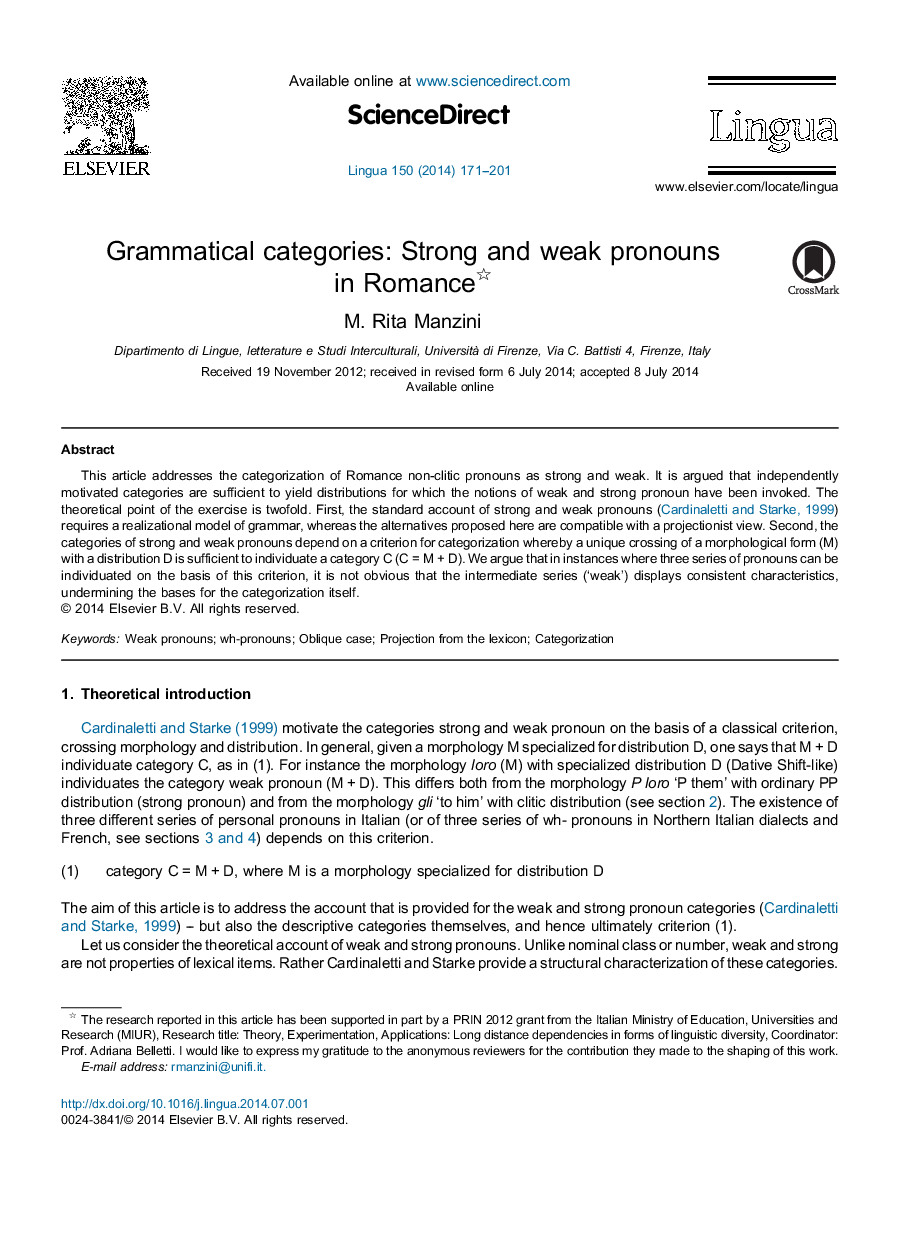| Article ID | Journal | Published Year | Pages | File Type |
|---|---|---|---|---|
| 7298497 | Lingua | 2014 | 31 Pages |
Abstract
This article addresses the categorization of Romance non-clitic pronouns as strong and weak. It is argued that independently motivated categories are sufficient to yield distributions for which the notions of weak and strong pronoun have been invoked. The theoretical point of the exercise is twofold. First, the standard account of strong and weak pronouns (Cardinaletti and Starke, 1999) requires a realizational model of grammar, whereas the alternatives proposed here are compatible with a projectionist view. Second, the categories of strong and weak pronouns depend on a criterion for categorization whereby a unique crossing of a morphological form (M) with a distribution D is sufficient to individuate a category C (CÂ =Â MÂ +Â D). We argue that in instances where three series of pronouns can be individuated on the basis of this criterion, it is not obvious that the intermediate series ('weak') displays consistent characteristics, undermining the bases for the categorization itself.
Keywords
Related Topics
Social Sciences and Humanities
Arts and Humanities
Language and Linguistics
Authors
M. Rita Manzini,
